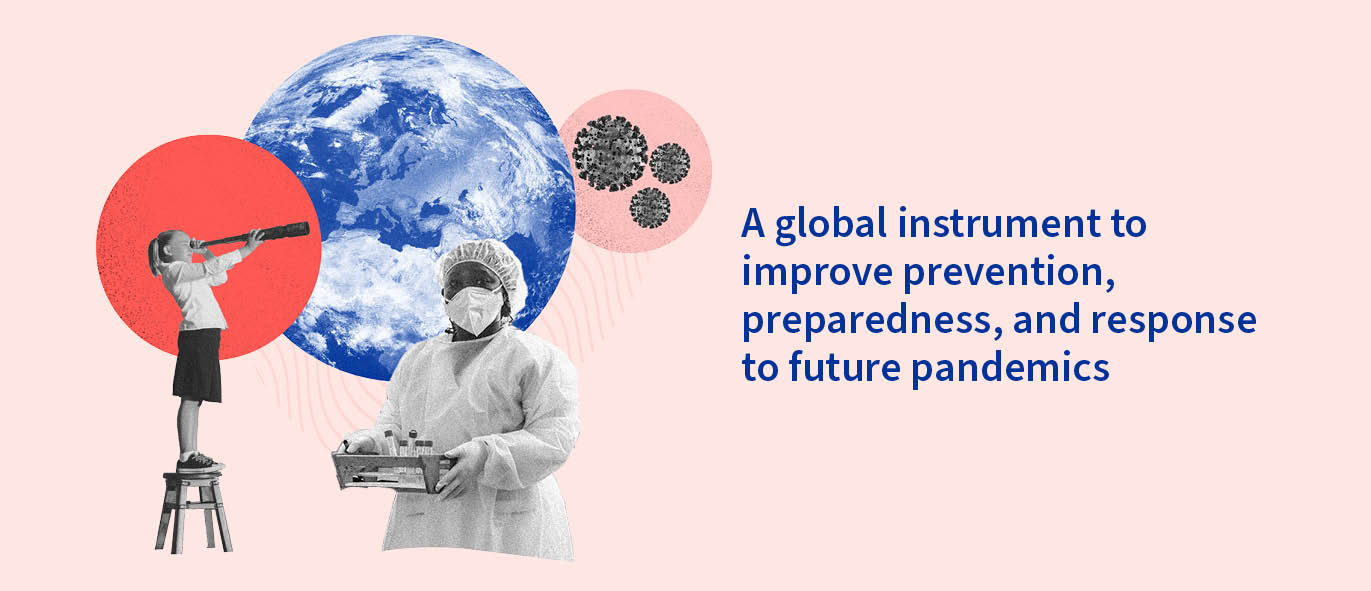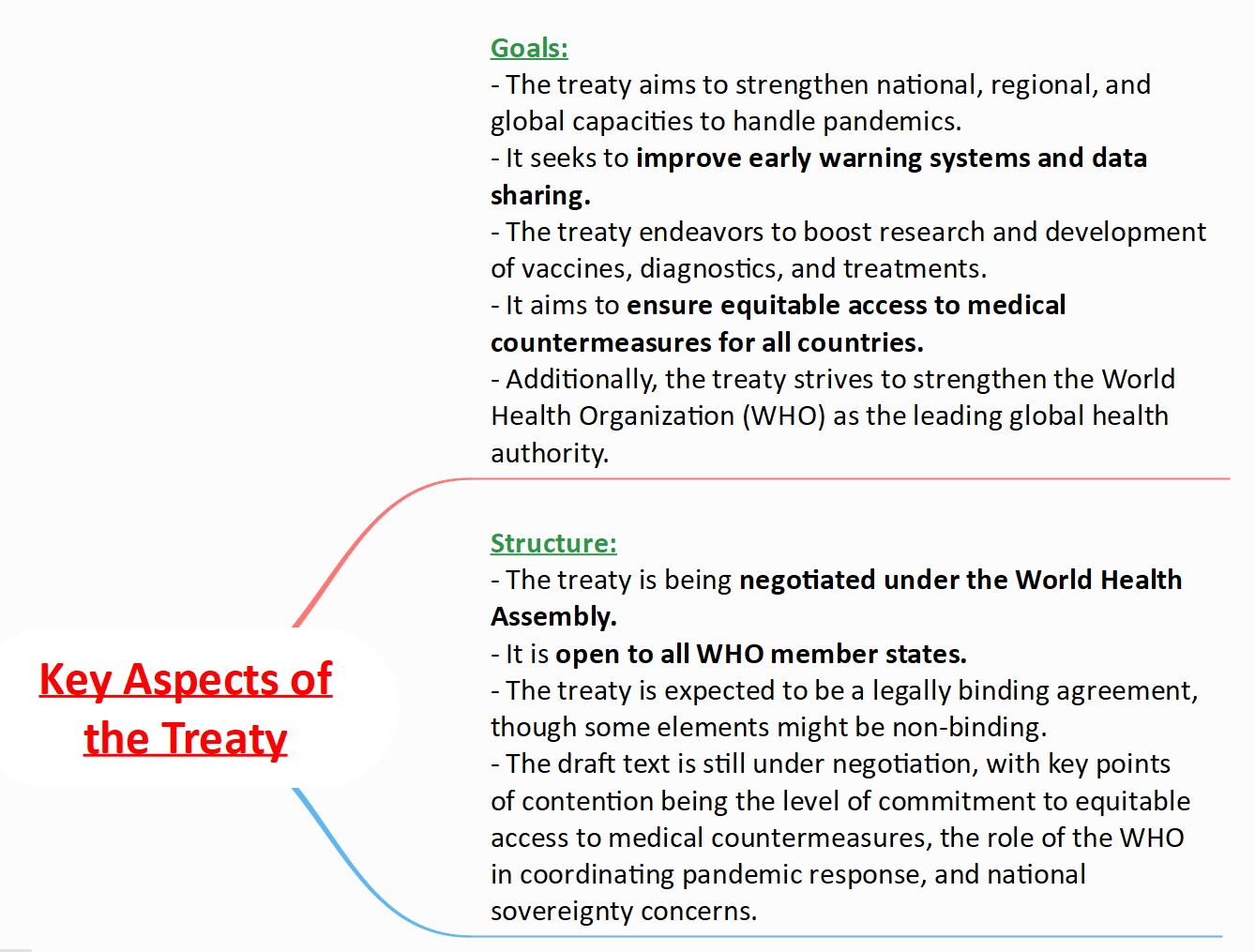Free Courses Sale ends Soon, Get It Now


Free Courses Sale ends Soon, Get It Now



Copyright infringement not intended
Picture Courtesy: www.consilium.europa.eu
Context: The World Health Organization (WHO) is urging its member nations to sign a pandemic treaty to strengthen global preparedness for future health crises, even as the world grapples with the ongoing COVID-19 pandemic and prepares for the potential emergence of "Disease X."
|
Disease X
|
Pandemic Treaty

Potential Benefits of the Treaty
Challenges and Concerns
|
The Pandemic Treaty is not meant to replace or undermine existing international instruments, such as the International Health Regulations (IHR), but rather to complement and reinforce them. The treaty would also respect the sovereignty and diversity of each country while encouraging mutual learning and best practices. |
Conclusion
|
PRACTICE QUESTION Q. To what extent can the "One Health" approach, advocating for integrated human, animal, and environmental health, be reconciled with the realities of global economic and social inequalities that contribute to zoonotic disease emergence and pandemic vulnerability? How can international collaboration address these underlying systemic issues to achieve truly equitable pandemic preparedness and response? |
© 2024 iasgyan. All right reserved